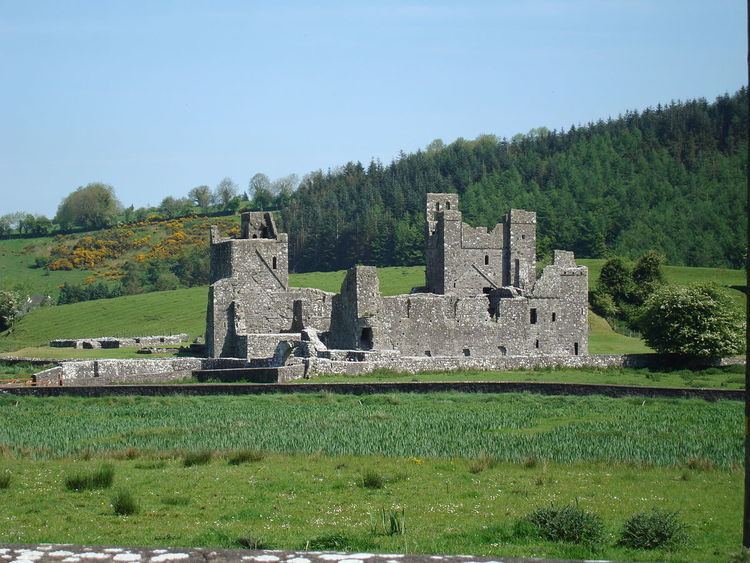Order Benedictines Disestablished 27 November 1539 | Status Inactive Province Leinster Founder Féchín of Fore | |
 | ||
Visible remains abbey, hermitage, town gates Address Fore, Co. Westmeath, Ireland Hours Open today · Open 24 hoursTuesdayOpen 24 hoursWednesdayOpen 24 hoursThursdayOpen 24 hoursFriday(Saint Patrick's Day)Open 24 hoursHours might differSaturdayOpen 24 hoursSundayOpen 24 hoursMondayOpen 24 hours Similar Tullynally Castle, Belvedere House and Gardens, Mullingar Greyhound Stadium, Loughcrew, Mullaghmeen | ||
Fore abbey co westmeath ireland
Fore Abbey (Irish: Mainistir Fhobhair) is the old Benedictine Abbey ruin, situated to the north of Lough Lene in County Westmeath,just 25km ouside its county town of Mullingar.
Contents
- Fore abbey co westmeath ireland
- Aerial video of fore abbey co westmeath ireland
- A Benedictine Priory
- Seven Wonders of Fore
- References
Fore village, (sister parish of nearby St. Mary's Collinstown) is situated within a valley between two hills: the Hill of Ben, the Hill of Houndslow, and the Anchorland rise area. There can be found the ruins of a Christian monastery, which had been populated at one time by French Benedictine monks from Évreux, Normandy.
Fore, Fobhar is the anglicised version of the Irish name that signifies “the town of the water-springs” and was given to the area after Saint Feichin’s spring or well, which is next to the old church a short distance from where the ruined monastery still stands. It was St. Feichin who founded the ancient Fore Abbey around 630. By 665 (the time of the yellow plague) there were 300 monks living in the community.
Aerial video of fore abbey co westmeath ireland
A Benedictine Priory
In the 13th century Hugh de Lacy, Lord of Meath the Norman and landlord built a Bendictine priory in the valley nearby. Many of the buildings that remain today (in ruins) are from the 15th century and have been restored throughout this century, making Fore Abbey the largest group of 300 Benedictine to have sojourned and remained in Ireland. This priory was dedicated to both St Feichin and St Taurin, the Évreux, Normandy abbot of the parent monastery.
Seven Wonders of Fore
The Abbey is also noted for what local populations call its seven wonders:
- The monastery built upon the bog.
- The mill without a race (St. Fechin reportedly induced water to flow from the ground and operate a mill that had no visible water supply - in reality water from Lough Lene flows through the ground).
- The water that flows uphill. (St. Fechin reportedly used his staff to make the water flow uphill)
- The tree that has three branches/the tree that won’t burn. Pilgrims place coins in it, giving it the name "the copper tree."
- The water that doesn’t boil in St Fechin's holy well.
- The anchorite in a cell
- The lintel-stone raised by St. Fechin’s prayers.
Another important aspect of Fore is the Fore Crosses one of which is in the village of Fore. There are 18 crosses; some crosses are plain (most likely due to wind and rain erosion) whilst others still remain carved. These are spread out over 7 miles on roadways and in fields and bore witness to religious persecution during penal times.
